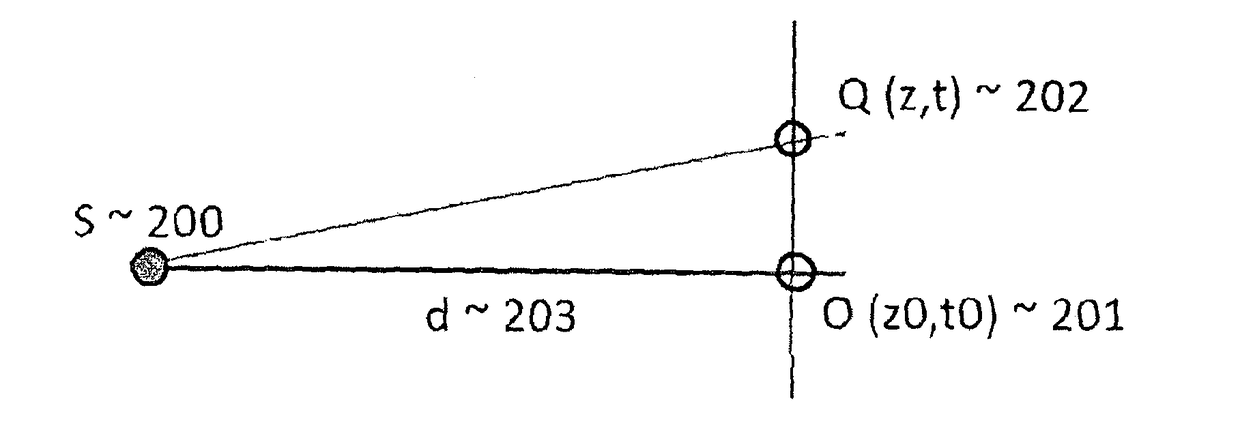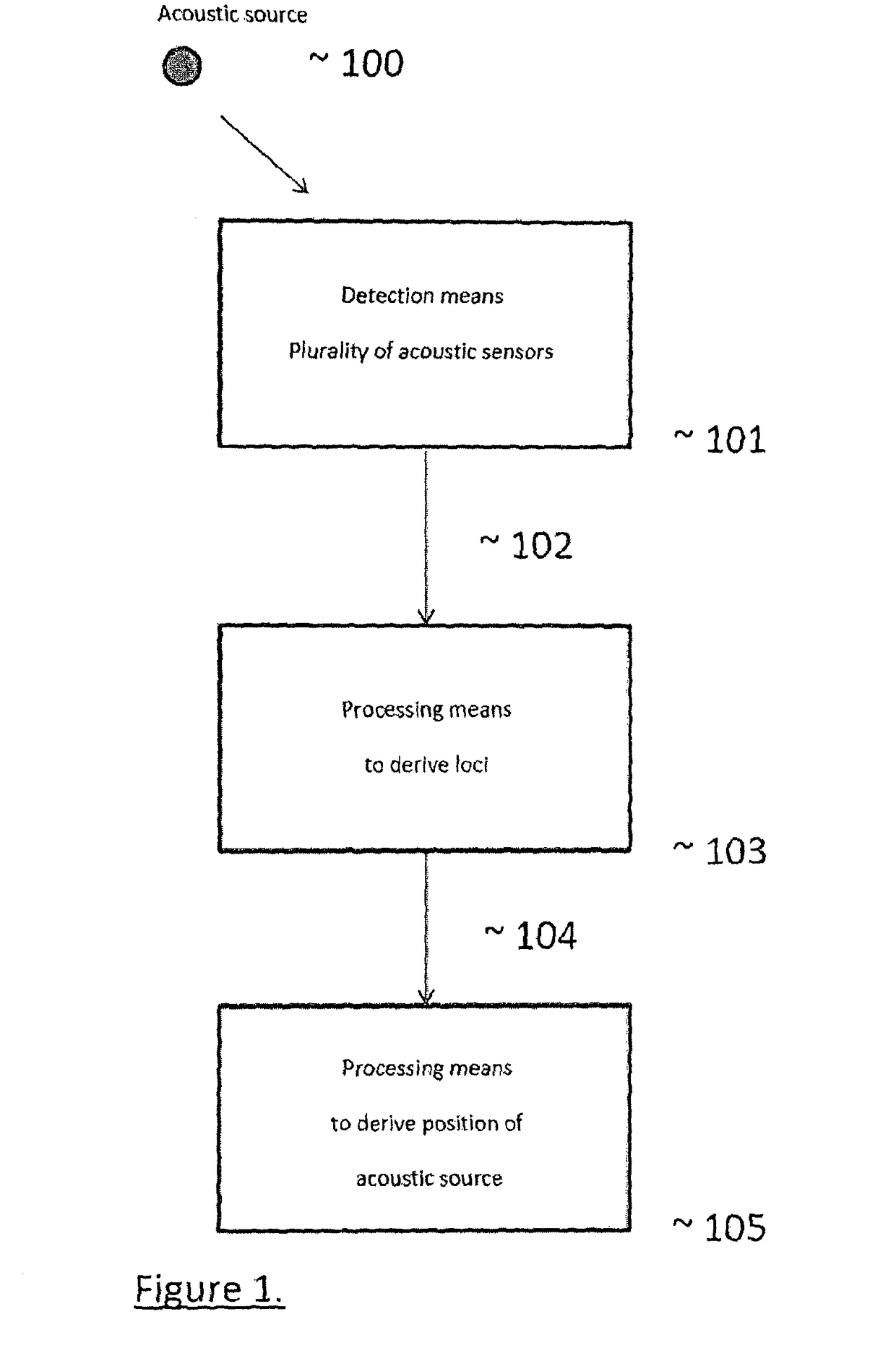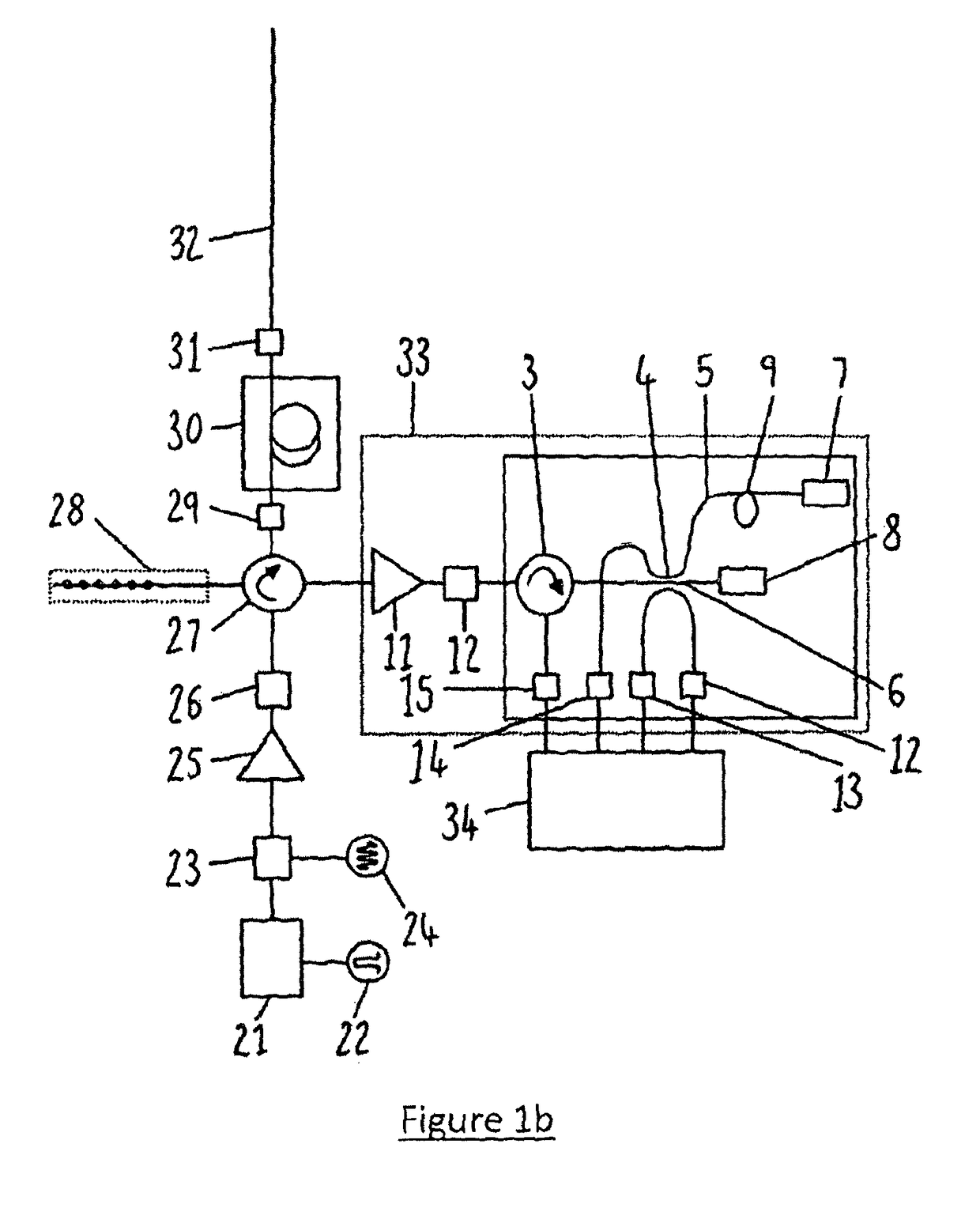Method and system for locating an acoustic source
a technology of acoustic source and acoustic sensor, which is applied in the direction of direction/deviation determination system, instruments, and wellbore/well accessories, etc., can solve the problem that the strength of an acoustic source is usually unknown, the strength of a signal as detected by an acoustic sensor is not a reliable indicator of the distance between the source and the source, etc. problem, to achieve the effect of improving accuracy
- Summary
- Abstract
- Description
- Claims
- Application Information
AI Technical Summary
Benefits of technology
Problems solved by technology
Method used
Image
Examples
Embodiment Construction
[0065]With reference to FIG. 1, the present invention consists of one or more detection means each consisting of a plurality of acoustic sensors (101) from which one or a plurality of signals (102) as a function of space and time may be obtained which results from acoustic energy from one or a plurality of optical sources (100) falling on the detection means (101), a processing means (103) which derives one or a plurality of loci (104) from the signal (102), and a processing means (105) which derives a position for one or a plurality of acoustic sources (100) from the one or plurality of loci (104). In preferred embodiments of the invention, the plurality of acoustic sensors is high and they are closely placed, preferably implemented with a distributed acoustic sensor, and more preferably, a distributed optical fibre acoustic sensor, and still more preferably, where both the acoustic amplitude and phase are provided. An example of such preferred detection means is described in paten...
PUM
 Login to View More
Login to View More Abstract
Description
Claims
Application Information
 Login to View More
Login to View More - R&D
- Intellectual Property
- Life Sciences
- Materials
- Tech Scout
- Unparalleled Data Quality
- Higher Quality Content
- 60% Fewer Hallucinations
Browse by: Latest US Patents, China's latest patents, Technical Efficacy Thesaurus, Application Domain, Technology Topic, Popular Technical Reports.
© 2025 PatSnap. All rights reserved.Legal|Privacy policy|Modern Slavery Act Transparency Statement|Sitemap|About US| Contact US: help@patsnap.com



